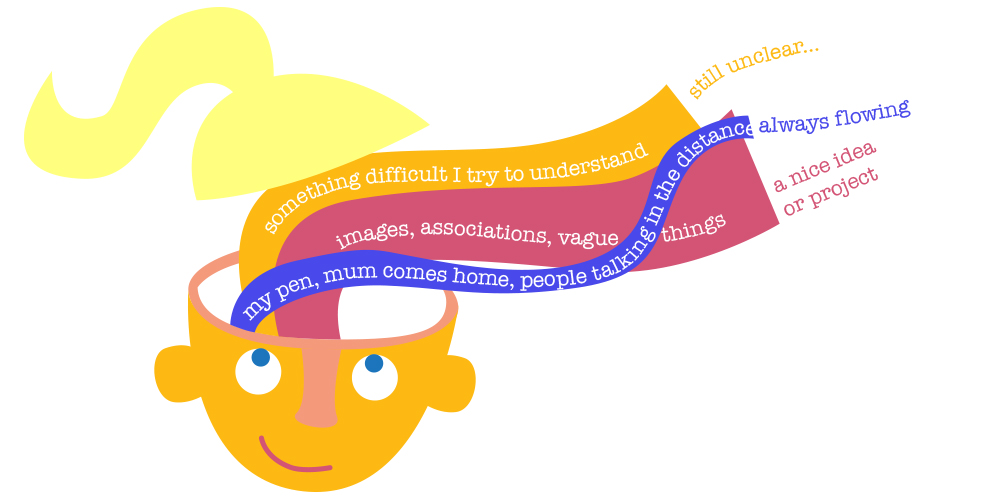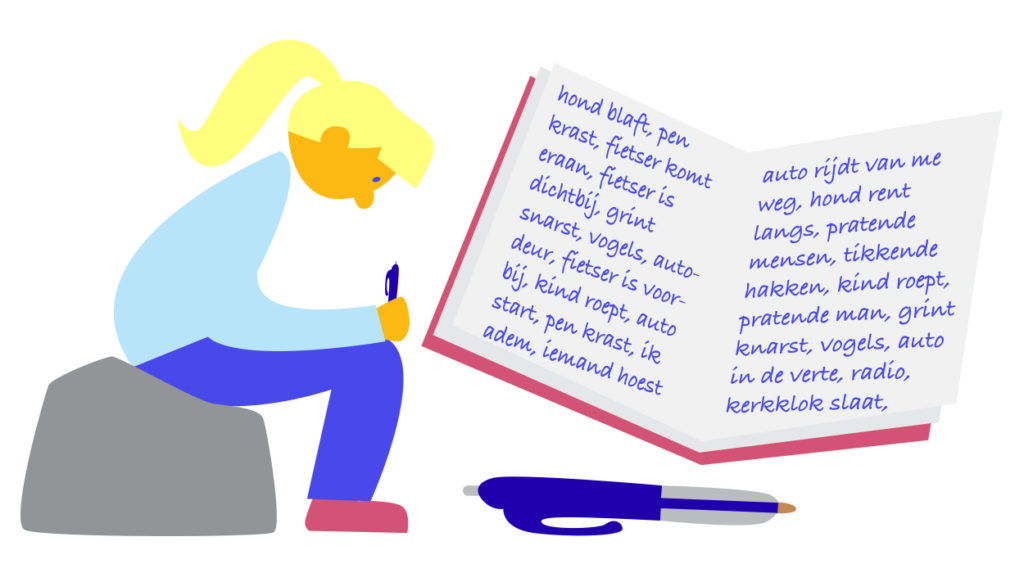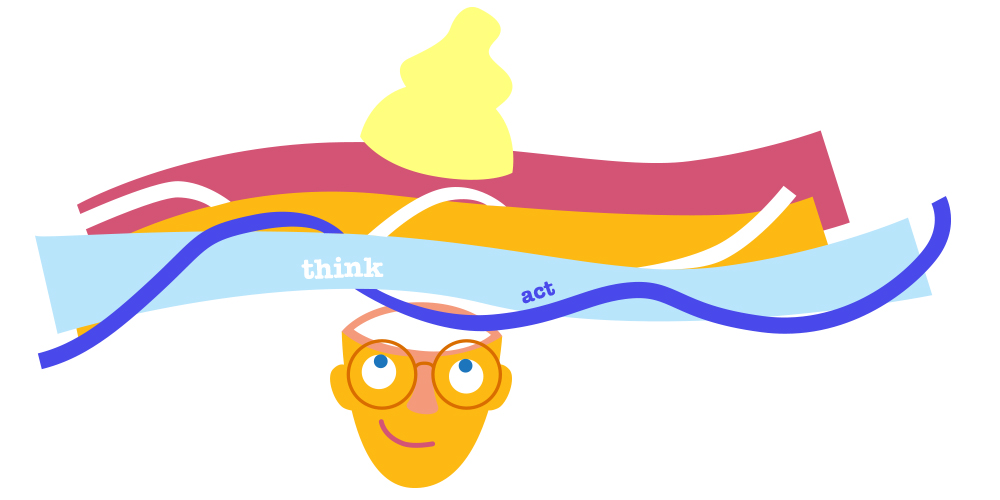I once read in a report that the problem with making and girls is that they often resort to decorating. They are not inventing technical solutions, they are making it pretty. (The report also said boys do way better: they do constructions and other clever things!) I was very annoyed by this report. Now I understand why.
As a child I used to think about thinking a lot. And how it works. In my imagination it looked like this:
I have rivers in my head. Each river is a theme or subject. Some are really to the point, some are still undefined. They move by themselves and some show bright and clear, some are out of focus in the background. The one river that’s always present in the front is the here and now: sounds (footsteps, keyboard, pen on paper, doors closing, cyclists in the distance, …), actions (ride my bike to school, prepare my lunch, …). The here and now flow is always there and very comforting. Focussing on the here and now causes the other deeper rivers to flow smoothly.
Write it all down
When I needed the deep rivers to flow extra smooth, I often sat down with a little notebook and pen. In this notebook I wrote everything down that I heard, literally. This kept my front thoughts occupied while my deep thoughts would grow and flourish. It worked.
I haven’s done this for years, but it jumped back into my memory when I heard Gever Tully tell about his wonderful Tinkering School.
Sometimes his students suddenly stop working on a problem or challenge. They start decorating, even when this decorating was not core at all. Or didn’t seem core. Because later-on he understood this decorating might nog look productive, but it is in fact an essential fase: while decorating, the makers’ brains are on a break. The working on the problem continues, but in the background. This creates the brainspace needed to come up with creative solutions.
Too much focus pushed the solution away, distance creates space to have the solution ‘come to you’.
Now I think this about thinking:
My thought rivers are all fed by actions. I think and do. When I want to understand an idea about creativity, I start working on an illustrated blog. While drawing, I start getting it. I’ts like I can only grab my thoughts by drawing.
I no longer only observe this, but create the situation on purpose. For me drawing works really well. My pencils are my most important thinking tools.
How does this work?
When a new idea appears, three things can happen:
- It disappears by overthinking it. When I only think, I can feel the idea slipping away. Too much focus and it dissolves. (A bit like trying to remember a dream, but failing.)

- Too much action and it breaks. When I start doing other things, it can break too. The action pushes it away. I never managed to master meditation: I get so annoyed all my thoughts become ugly. And running doesn’t work either: it’s so demanding it overtakes all. Gaining knowledge doesn’t’ work either. When I feed myself with theories and opinions of others in a too early stage, it breaks too. Ideas can only handle these confrontations when solid enough. Study helps in the endfase, more knowledge too early often cuts of the free flow of thoughts.

- It grows by doing the right thing. What works for me, is to engage in activities that are related (in context), but a a distance. Drawing works, looking out the window works, but also shopping for pencils or tools.

Can this be done deliberately?
A lot of theories explain events afterwards. The ten million dollar question is if these insight can be translated to a plan. A plan to use in working with children or adults. In makered for instance!
I love the ideas about the decorating fase. And I find comfort in understanding that having breaks and whiling the time away is really important. And that over fixed step-by-step methods and short super structured lessons may overdo on the focus and thus prune away vulnerable brand new thoughts. Such a shame.
So to the girls in the stupid report: you’re definitely on to something!
Well, I’ll carry on thinking. To be continued: this blog is the very first of a series of 5.
Thinking about thinking:
- The balance between thinking and making
- About boredom and action
- Failing is no fun at all
- Why you need knowledge, skills and that other thing
- What I can teach you (spoiler: nothing)


